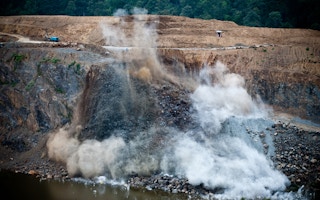There are only a few days to go before the Conference of Parties (COP) 21 takes place in Paris and with this comes the question: where does the Association of Southeast Asian Nations (Asean) stand in the negotiations?
At COP21, there is no negotiating block for Asean. Most Asean countries negotiate with the Group of 77, China and the Like Minded Developing Countries (LMDC). The lack of having a collective Asean voice in the talks despite the impending Asean integration makes one wonder: is the region ready to tackle climate change for sustainable development?
Many countries in the Asean region are vulnerable to climate change. The Philippines, for example, has been experiencing extreme weather events that claim thousands of lives every year. In July this year, Myanmar suffered its worst floods and landslides due to rains, affecting a million of its population.
But while Asean is vulnerable to climate change impacts, it is also a growing economy facing energy challenges.
Growing economy, growing energy needs
Asean has many growing economies including the Philippines, Malaysia, Thailand and Singapore. As these countries expand, Asean as a region is also faced with growing energy needs.
“The rapidly developing Southeast Asian region is characterized by increasing energy demand, but at the same time it is plagued by growing environmental pressures, low rural electrification levels, and heavy reliance on fossil fuels and traditional biomass,” says Melissa Low, research associate at the Energy Studies Institute at the National University of Singapore.
“Southeast Asia’s primary energy requirement is projected to triple between 2005 and 2030, having more than doubled between 1990 and 2007 - with an annual growth rate of 4 percent (double the world’s average). Therefore, meeting the region’s energy needs will be challenging in light of climate change,” Low adds.
According to the International Energy Agency’s Southeast Asia Energy Outlook Report, the region’s energy demand is expected to increase by 80 per cent between 2013 and 2035. In the same report, coal is identified as the fuel of choice, with three-quarters of the thermal capacity under construction being coal-fired.
In the Philippines, more than 50 new coal power plants have been approved by the government. Indonesia plans to build more than 100 new coal power plants in the next 5 years. At the same time, Malaysia approved a renewable energy act in 2011 even if some still wonder if the plan is being implemented effectively.
Adrian Yeo, founder of Power Shift Malaysia says: “Malaysia has shown the world once again that we are great at policy making, but implementation on the ground leaves much to be desired. Our newly enacted Renewable Energy Bill is clouded with alleged malpractice in license quota allocation.”
The country’s aim to be the world’s second largest solar panel producer is meaningless if it ships almost every panel it produces overseas and does not deploy the technology locally, he adds.
Implementation of INDCs crucial
All countries in the Asean region, except Brunei Darussalam and Malaysia, have submitted their Intended Nationally Determined Contribution (INDC). The INDC is a set of commitments by each country sent to the United Nations. It details plans on how to mitigate carbon emissions, and for some countries, how to adapt to climate change impacts.
Low believes that Asean nations will have to work domestically as well as a region to fully commit to solving the climate crisis. “It will be paramount that ASEAN not only look to the UNFCCC to solve the climate crisis but work hard domestically to ensure that their INDCs are met. This means taking a cold hard look at implementation policies in the Asean member states toward meeting their INDCs or to initiate and intensify efforts for countries who have not submitted theirs,” she said.
“Improving the implementation of Nationally Appropriate Mitigation Action (NAMA) and INDCs should contribute to the more efficient utilization of resources, while encouraging technological progress and therefore improving the region’s competitiveness,” Low added.
Many Asean countries such as Thailand, Cambodia, Vietnam, Myanmar, and the Philippines included in their INDCs plans to reduce greenhouse gas emissions in the energy sector. However, the challenge remains the ability to finance the shift from fossil fuels such as coal to renewable energy. This shift is also a critical component of the COP21 negotiations.
While Asean countries do not negotiate collectively at COP21, each country’s commitments to the UNFCCC will be crucial to helping address the climate crisis and ensuring the region’s sustainability, even as it grows.
Renee Juliene Karunungan is the Communications Director of Dakila. She is also a climate tracker fellow for Adopt A Negotiator.


















